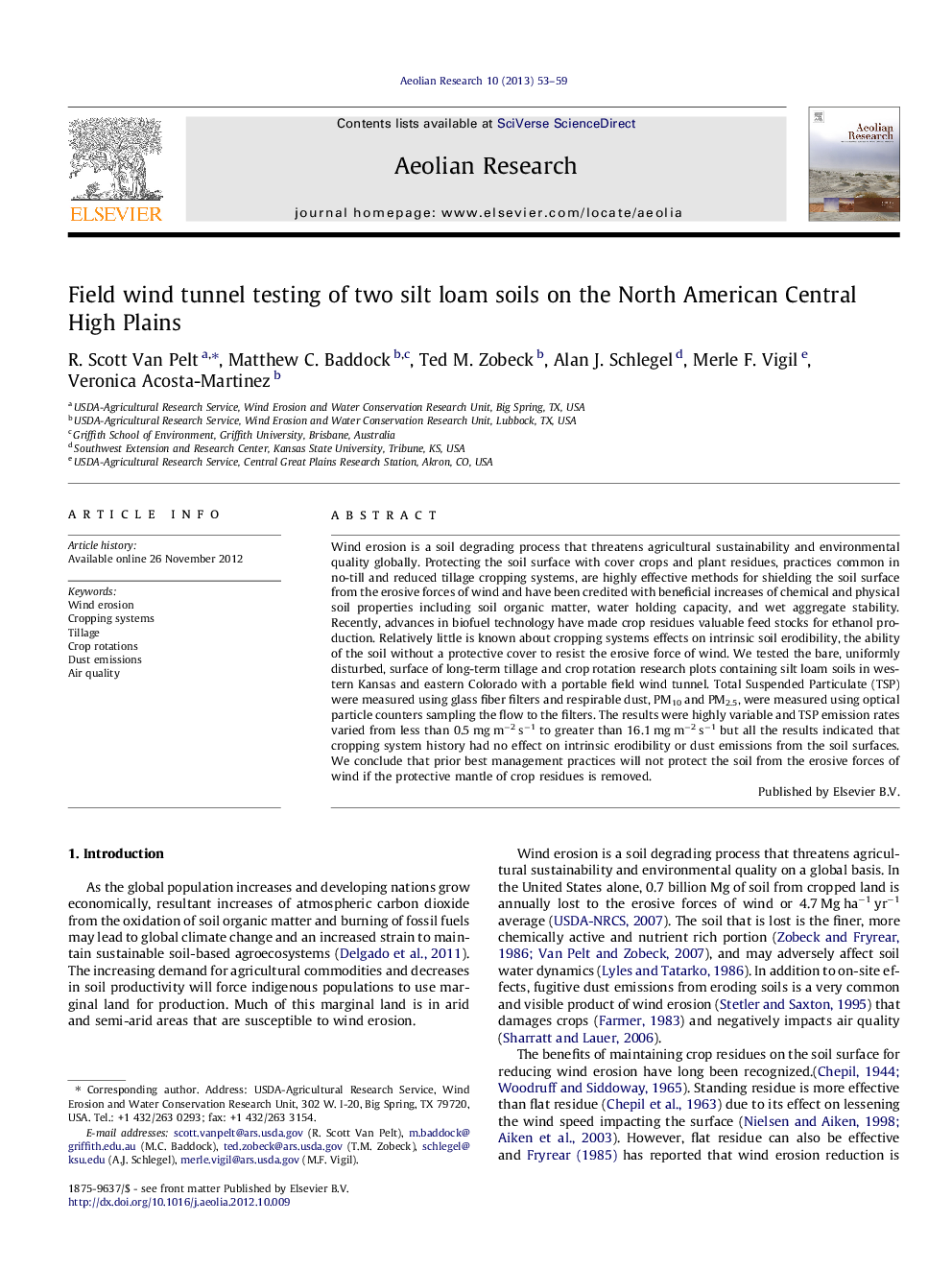| Article ID | Journal | Published Year | Pages | File Type |
|---|---|---|---|---|
| 4673818 | Aeolian Research | 2013 | 7 Pages |
Wind erosion is a soil degrading process that threatens agricultural sustainability and environmental quality globally. Protecting the soil surface with cover crops and plant residues, practices common in no-till and reduced tillage cropping systems, are highly effective methods for shielding the soil surface from the erosive forces of wind and have been credited with beneficial increases of chemical and physical soil properties including soil organic matter, water holding capacity, and wet aggregate stability. Recently, advances in biofuel technology have made crop residues valuable feed stocks for ethanol production. Relatively little is known about cropping systems effects on intrinsic soil erodibility, the ability of the soil without a protective cover to resist the erosive force of wind. We tested the bare, uniformly disturbed, surface of long-term tillage and crop rotation research plots containing silt loam soils in western Kansas and eastern Colorado with a portable field wind tunnel. Total Suspended Particulate (TSP) were measured using glass fiber filters and respirable dust, PM10 and PM2.5, were measured using optical particle counters sampling the flow to the filters. The results were highly variable and TSP emission rates varied from less than 0.5 mg m−2 s−1 to greater than 16.1 mg m−2 s−1 but all the results indicated that cropping system history had no effect on intrinsic erodibility or dust emissions from the soil surfaces. We conclude that prior best management practices will not protect the soil from the erosive forces of wind if the protective mantle of crop residues is removed.
